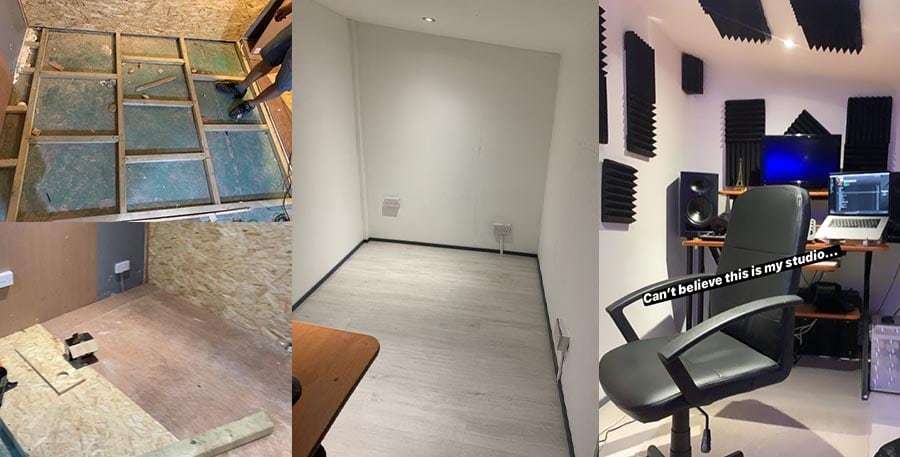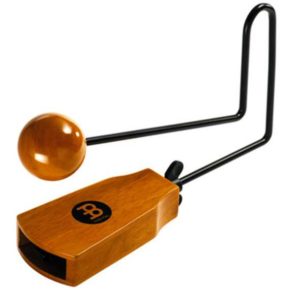
Adaptation of the room for homerecording
Some people hardly pay attention to the conditions in which they work with sound. This group is mostly amateurs who only use a computer connected to the hi-fi tower speakers. So, is the room irrelevant to the activities on the AUDIO tracks? Oh no! It is colossal.
Does the room adaptation matter? Such people think – “Why do I need a properly adapted room if I do not use microphones or live instruments?” And while they will be right in a way, the stairs will start while mixing, and even when choosing the right sounds. As we know, every studio, even a home one, should have decent monitors for any work with sound. When we choose the sounds of our instruments by listening to them on monitors, we rely on how these sounds sound through our speakers and in our room.
The sound coming from the monitors will be tinged to some extent by the response of the room, because what we are actually hearing is a combination of the signal from the monitors with the reflections from the room reaching our ears slightly later than the direct signal. This makes all the work very difficult and strenuous. Of course, we are talking only about the selection of the sound, and where is the mix?
Acoustic conditions in the room Well, some room acoustics are required for recordings, but they are all the less important the closer the microphone settings are to the sound source. However, it is worth knowing the basic information about the behavior of sound waves in a room, it will certainly help in a more conscious assessment of the phenomena taking place there.
The listening room will be more important than the recording room, to which you need to pay more attention in terms of neutrality in relation to the sounds coming from the monitors at the listening point.
Recording solutions So-called acoustic mats or acoustic screens will be a good solution. They can even be made from egg “grids”. Is this a joke? Not. This method works quite well and, most importantly, is cheap. It consists in making a few larger panels that can be placed freely around the singer. It is also worth hanging one panel on the ceiling above the singer.
We can also use a thick, old carpet that we place on the floor. The resulting recordings will sound spatial and will not be ‘jammed’. The advantage of this solution is the mobility of the panels made, after the recording is finished, fold them back and that’s it.
The mats prepared in this way will not only isolate the singer well, but will almost completely cut us off from the noise from the surroundings or neighboring rooms.
The acoustic screen is also a useful tool, it is a bit more difficult to make it yourself, but for those who want nothing difficult. From experience, I advise against buying the cheapest screens, they are made of crap material, to put it mildly, and are only suitable for kindling.
However, when we are going to make such a screen ourselves, it is worth making more of them, so that we can better understand the characteristics of their operation, the reflections that will occur. Obviously, such a ‘self-made’ will never be perfect, but at the beginning it will be a good solution.
It is also worth thinking about good studio monitors, and such ones suitable for home will not be cosmically expensive. The topic of the monitors themselves is a topic for the next (if not a few) articles, so let’s only deal with their arrangement.
Listening setup First of all, there should be nothing between the loudspeaker and the listener’s ear, the speakers should form an equilateral triangle with his head, the speaker axes should pass through the ear, the height of their placement should be such that the tweeter is at the level of the listener’s ear.
The loudspeakers should not be placed on an unstable surface. They should be positioned so that there is no possibility of resonance between them and the ground. If they are not active, i.e. they do not have their own built-in amplifiers, they should be powered by the highest-class sound amplifier, preferably the so-called audiophile quality, connected to the appropriate class equalizer in order to obtain a perfectly even listening depending on the room.
The listening monitors should have the highest possible quality cables connecting them with the amplifier and any equalizer, we recommend double cables, the so-called separate bi-wiring for high and low tones. This gives a better flow of current pulses between the amplifier and the speaker, no modulation of higher frequencies at lower frequencies, and overall much better and more detailed, spatial listening.
Summation An important aspect is to get acquainted with the subject and its scope before taking action in this industry. It will make our life much easier and speed up the start.
The adaptation of the room is of course not as important as the other facilities or talent, but it will make our work much more effective, and as you can see, we do not need any assets to start adapting our home studio.





